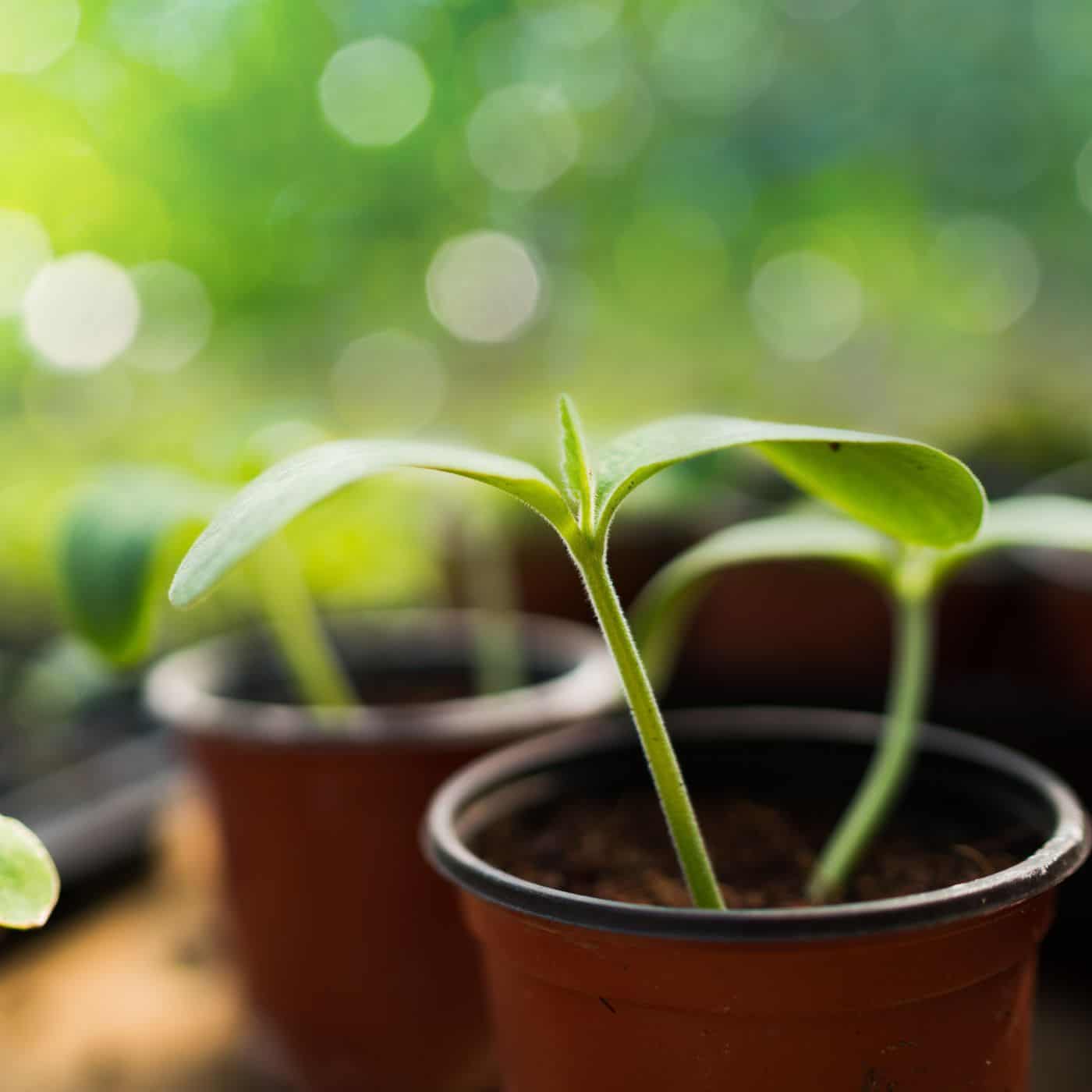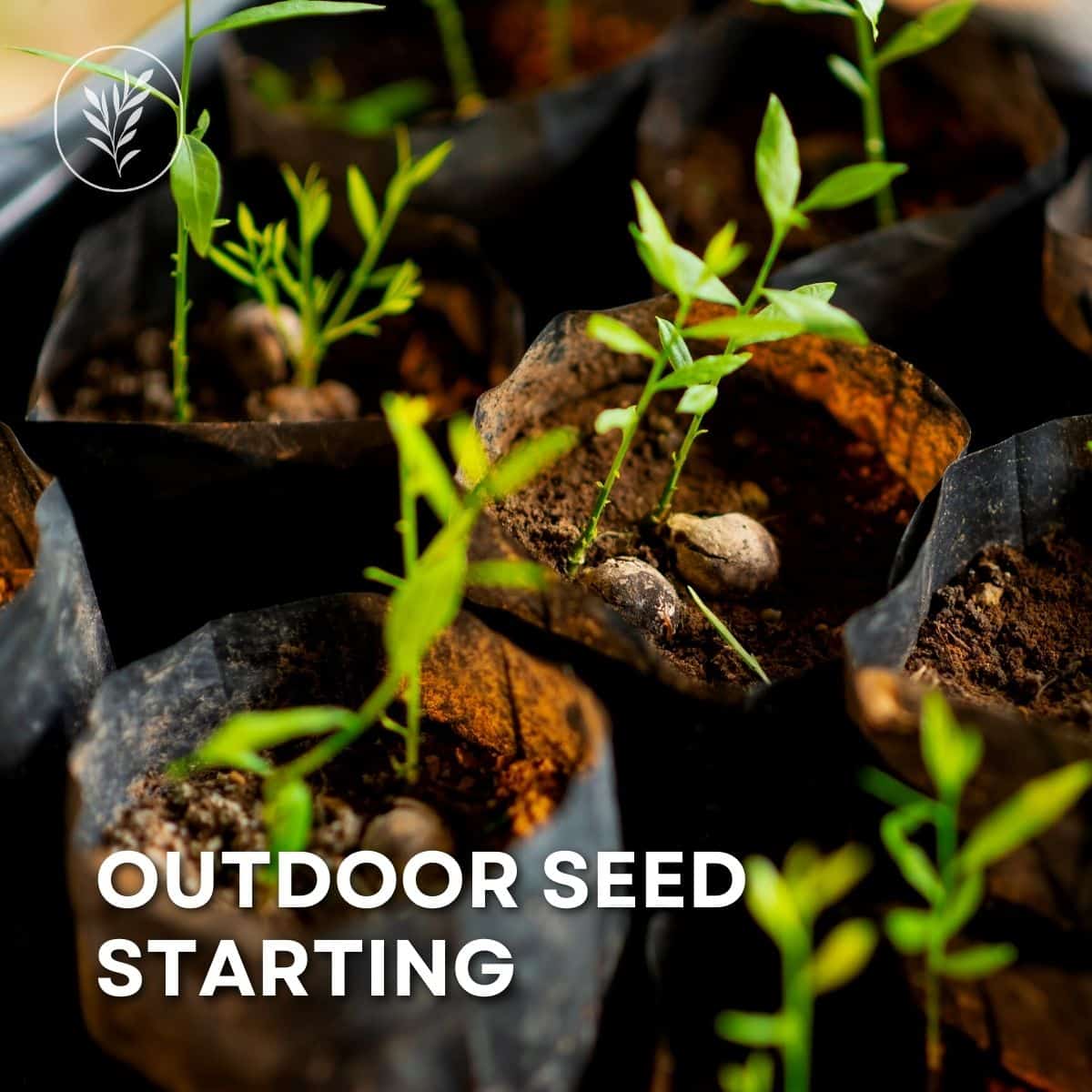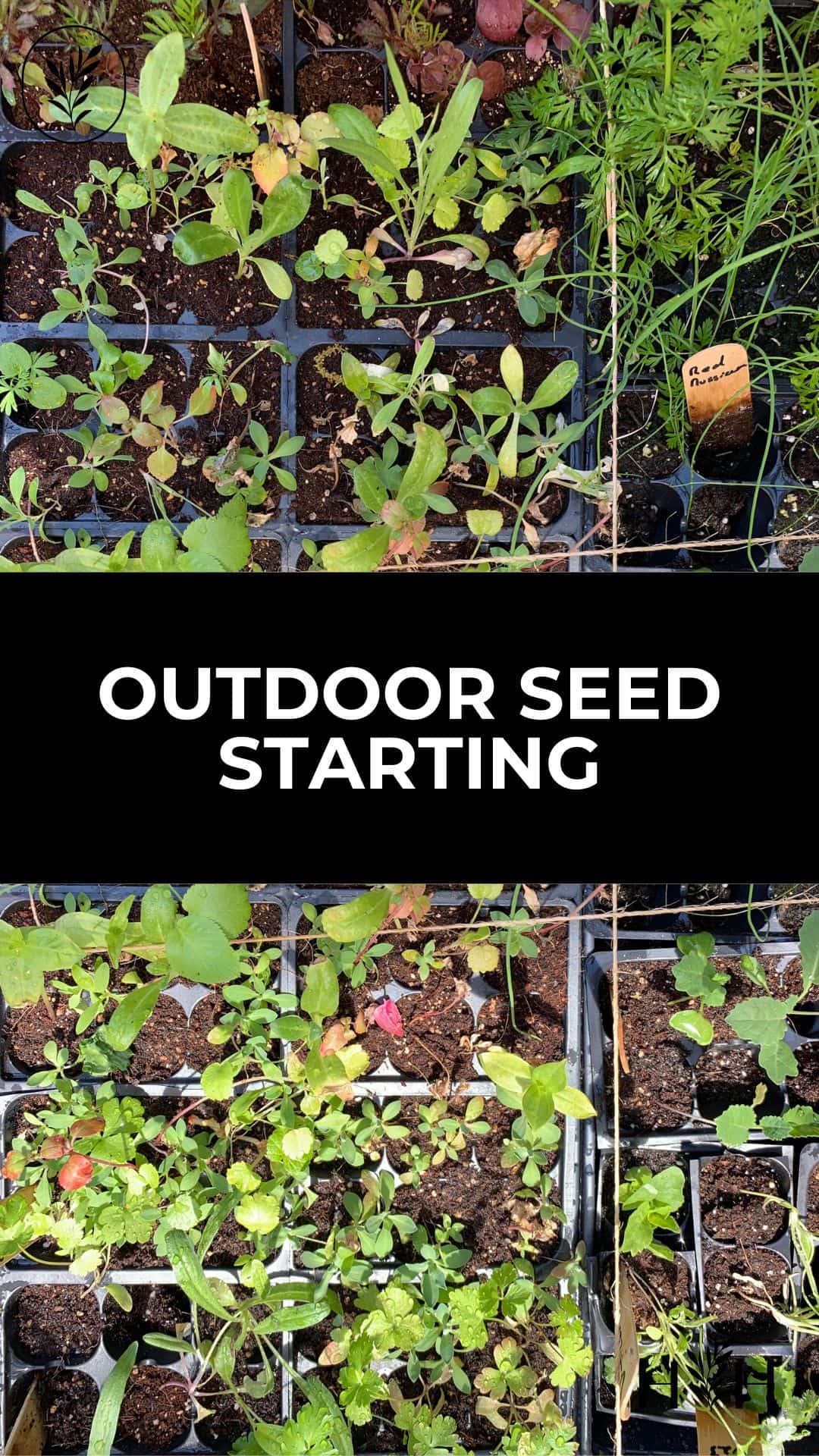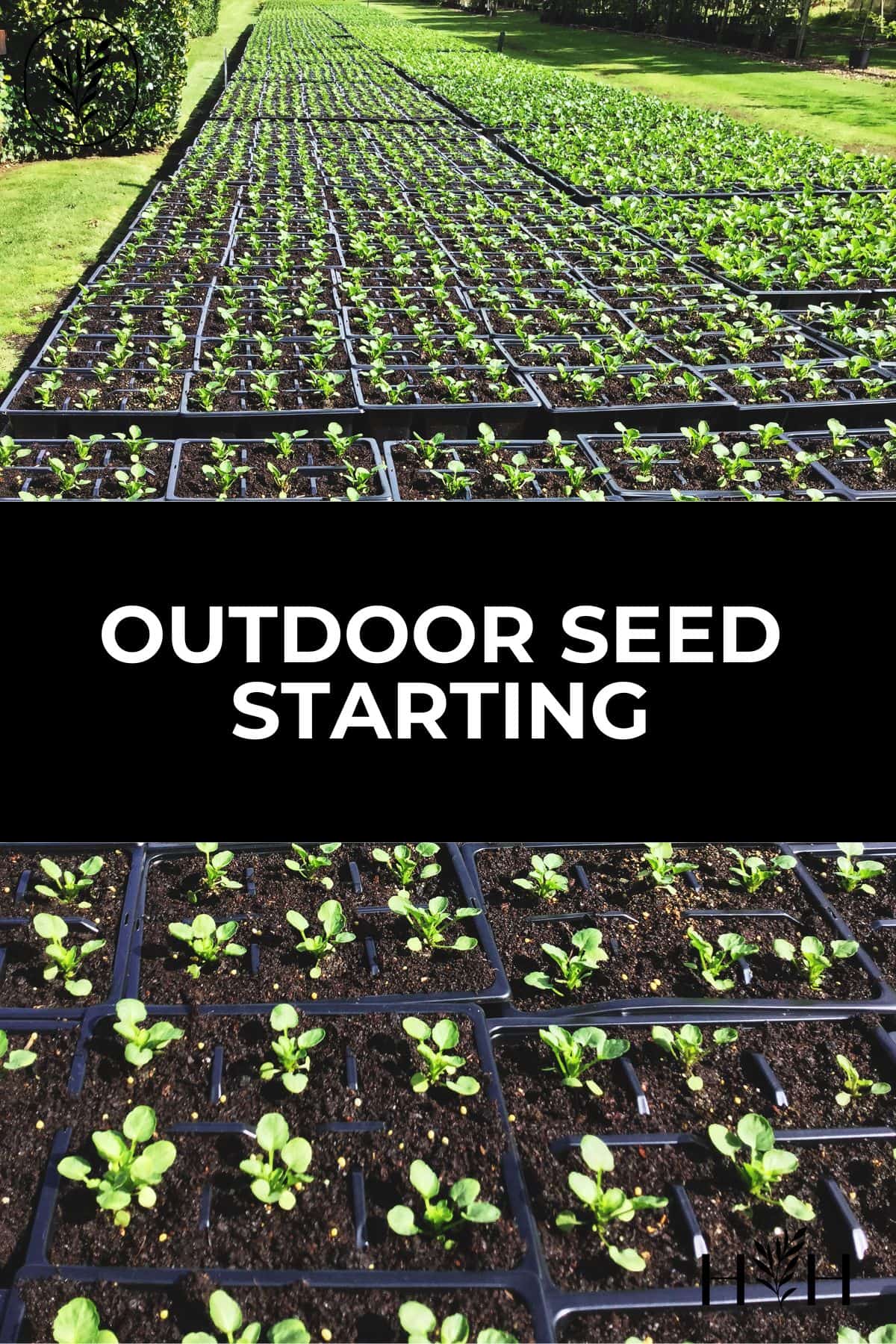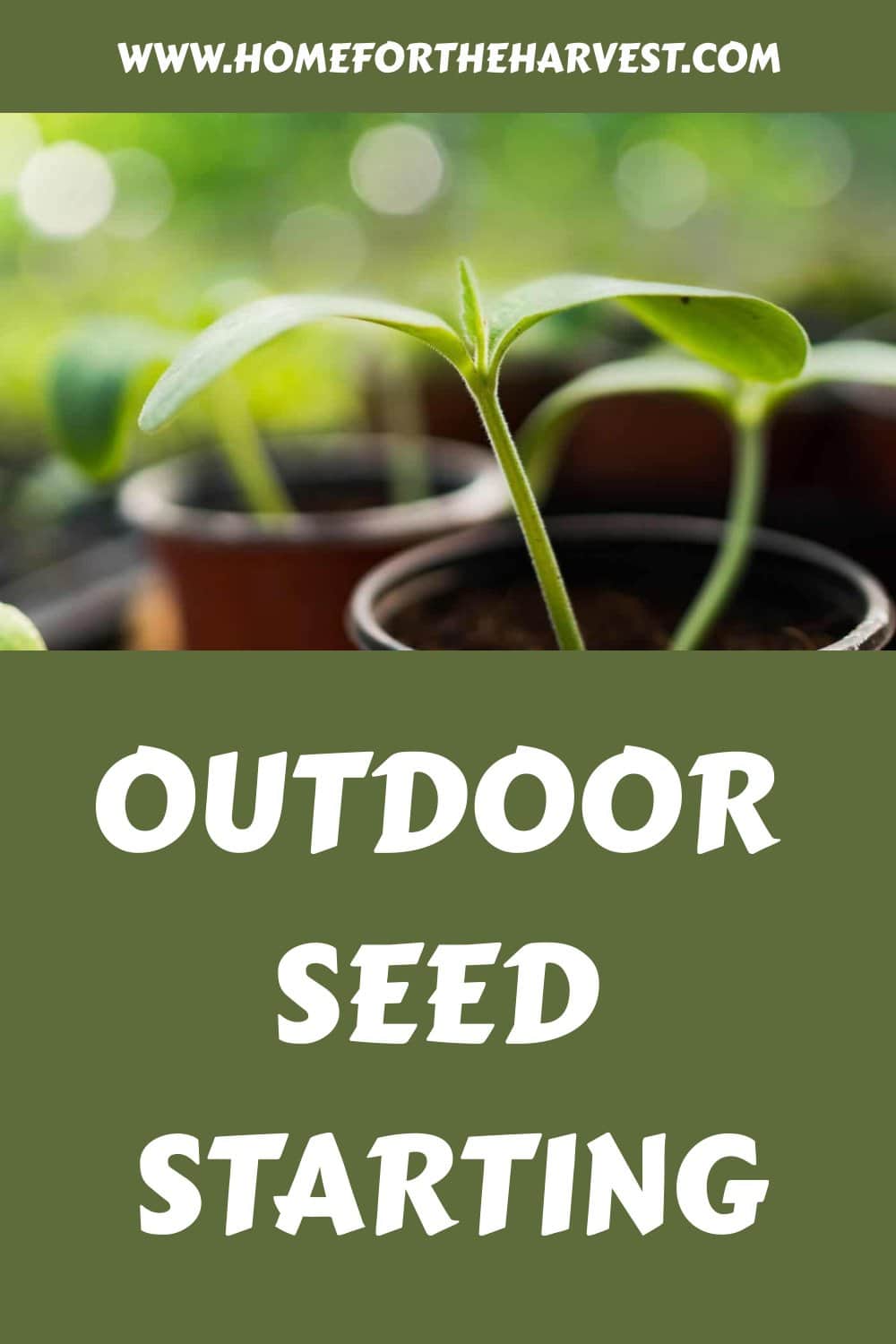Outdoor seed starting is a great way to grow your own vegetables, flowers, and herbs at home. It can be an exciting experience as you watch the tiny seeds transform into full-grown plants that you can enjoy throughout the growing season. However, it is important to do your research and understand what types of seeds are best for outdoor seed starting and the proper techniques.
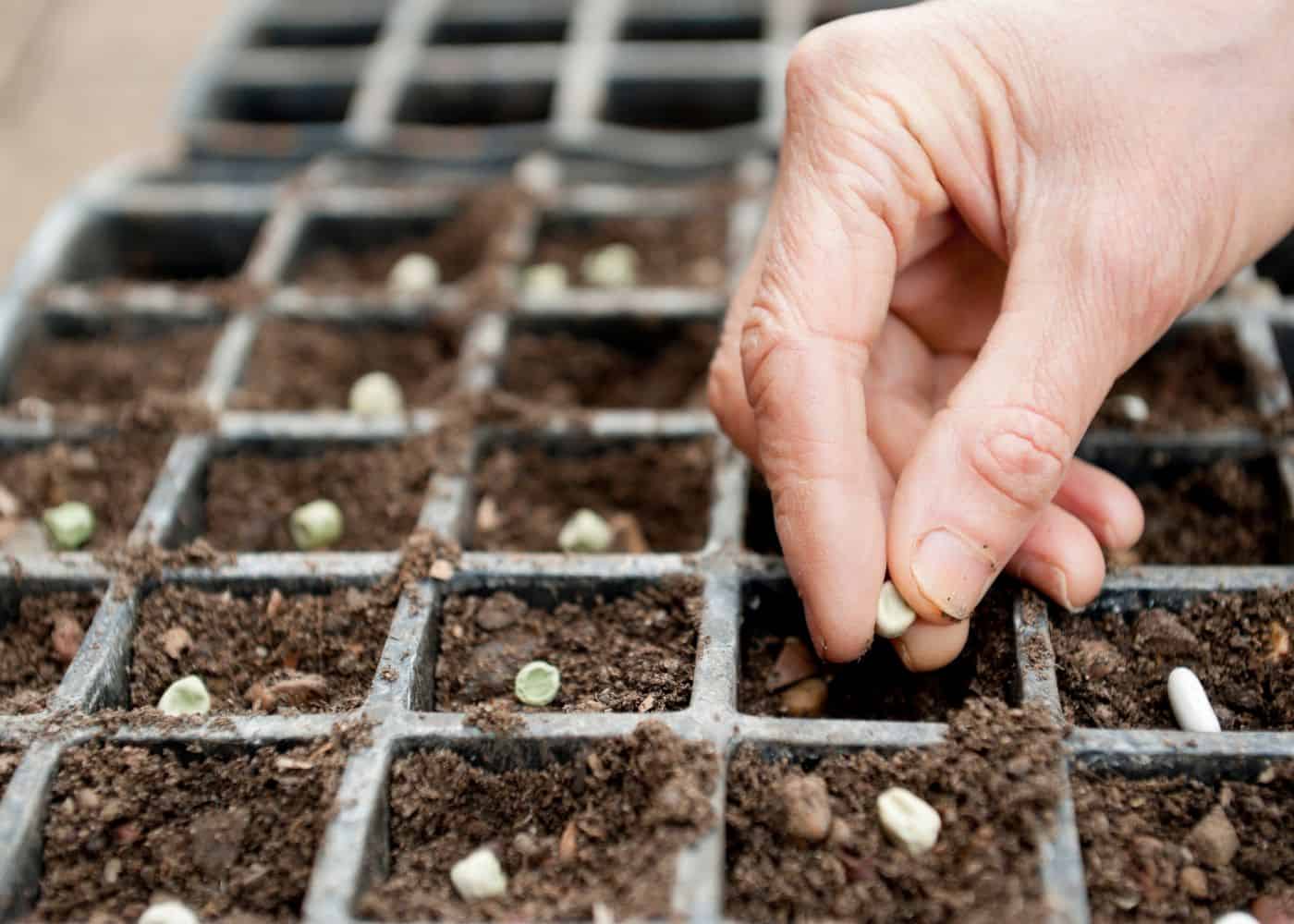
Outdoor soil preparation
Soil preparation is an essential step for successful outdoor seed starting. The type of soil you use and how it’s prepared will have a big impact on the success of your garden. When selecting soil, look for one that is light in texture and well-draining. A good-quality potting mix should work just fine. You generally don’t need “seed-starting” mixes when you’re growing outdoors.
Once you have selected your soil, it needs to be amended before planting seeds outdoors. This means adding organic matter such as compost or aged manure to improve the structure, drainage, fertility, and water retention capacity of the soil. Adding organic matter also helps reduce compaction which can occur when working with heavy soils like clay or silt loam.
You may also want to consider using a starter fertilizer when preparing your soil for outdoor seed starting. Starter fertilizers are specially formulated blends that provide plants with all the nutrients they need during their early stages of growth including nitrogen (N), phosphorus (P), and potassium (K). They are usually applied at planting time but can also be added prior to planting if desired.
Plant selection for seed sowing outdoors
Plant selection is an important part of any gardening project. When starting from seed, it’s important to choose plants that are suited to your climate and soil type. Vegetables such as tomatoes, peppers, squash, and beans are popular choices for many gardeners. Herbs like basil, oregano, parsley, chives and thyme can be grown in a variety of climates with minimal effort. Flowers such as marigolds and petunias provide vibrant color throughout the growing season while also attracting beneficial insects to the garden.
When selecting plants for your garden space consider how much sun or shade each area receives throughout the day. Many vegetables require at least 6 hours of direct sunlight per day while some herbs prefer more shade than sun. Knowing this information ahead of time will help you select appropriate varieties for your location before planting begins.
The size of the plant should also be taken into consideration when choosing what types to grow in a given space; tall-growing vegetables may need staking or other support structures if planted too close together, which can take up valuable real estate in smaller gardens or containers. Additionally, certain varieties may produce larger yields than others, so it is advisable to research different cultivars prior to purchasing seeds or starter plants from a nursery or online retailer if possible. This way you know exactly what kind of yield you can expect from each crop before investing time and money into them.
Finally, don’t forget about companion planting when selecting crops for your garden; certain combinations work better together than others (such as carrots and onions), so do some research on which ones would work best in your particular situation before getting started.
Once you’ve chosen the right plants for your garden, it’s time to move on to seed sowing and getting them ready for planting.
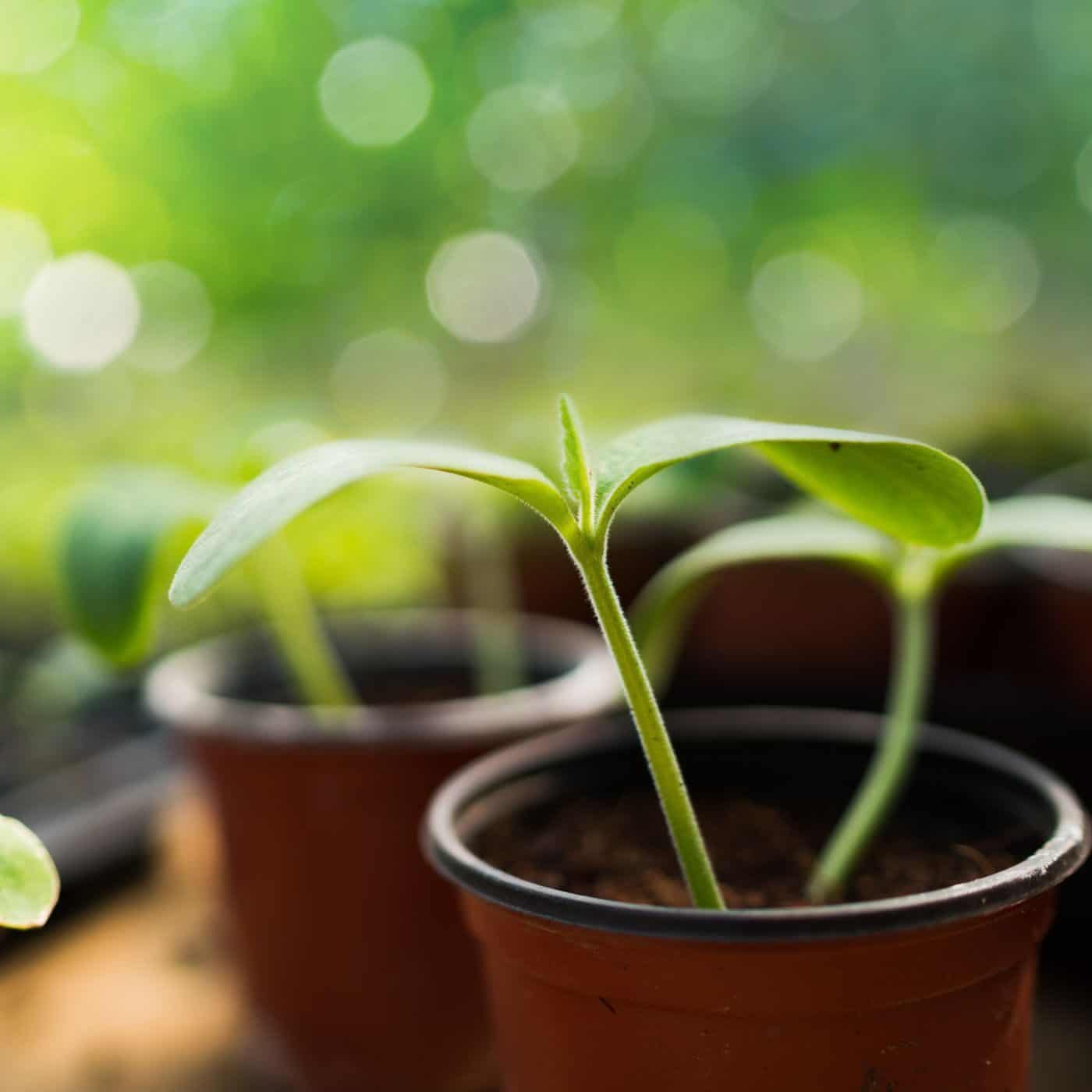
Seed sowing outdoors
Seed sowing is an important part of gardening, and it’s essential to get the timing right. The best time to sow seeds outdoors depends on your location and climate, but generally speaking, most vegetables can be planted in early spring when temperatures are still cool. Here is a chart of necessary soil temperatures for vegetable seeds. If it’s still quite cold outside, consider winter sowing your seeds.
Before you start planting, make sure that the soil is loose enough for the seeds to germinate easily. You should also check that there are no weeds or debris present in the area where you plan to plant. To prepare the soil for sowing, mix some compost into it before tilling or digging up any large clumps of dirt.
When it comes to how deep you should plant your seeds, this will depend on their size and type. Smaller seeds like lettuce and radish need only a shallow covering of about one-quarter inch while larger ones such as beans may require a depth of two inches or more. If unsure about what depth is required for specific types of seedlings, refer to their packet instructions or do some research online beforehand so that you know exactly what needs doing when planting them out later on.
Once your soil has been prepared correctly and all necessary measurements taken with regard to seed depth requirements – then it’s time for sowing. Make sure each seed is placed evenly apart from one another at its recommended distance (again this varies depending on the type) before lightly covering them over with soil using either a rake or hoe tool – whichever works best for you. Then water gently until moistened throughout but not overly saturated – too much moisture can cause mold growth which could damage young plants if left unchecked so keep an eye out during those first few weeks after seeding just in case.
Watering & fertilizing
Watering and fertilizing your outdoor seedlings is an important part of successful gardening. Without proper watering and fertilization, plants may not reach their full potential or may even die prematurely.
When it comes to watering, the amount you give depends on the type of plant you are growing as well as the climate in which it is planted. Generally speaking, most plants need about 1 inch of water per week during the growing season. If there has been no rain for a few days, then additional water should be given to ensure that your plants stay hydrated and healthy. It’s also important to make sure that your soil drains properly so that excess water doesn’t pool around the roots of your plants.
Fertilizer helps provide essential nutrients to help support growth and development in young seedlings. The type of fertilizer used will depend on what kind of plant you are growing; some require more nitrogen than others while some prefer phosphorus-rich soils instead. Fertilize every two weeks with a balanced fertilizer for best results but always read labels carefully before applying any product to avoid overfertilizing which can damage delicate root systems or cause nutrient burn in leaves if applied too heavily.
Watering and fertilizing are essential for healthy plants, so be sure to follow the instructions on your seed packet. Now let’s look at how sunlight and shade can help or hinder your outdoor seed-starting efforts.
Sunlight
Sunlight is an important factor in the growth of outdoor seedlings. Too much sun can cause them to dry out and burn, while too little will stunt their growth. The amount of sunlight needed for optimal growth depends on the type of plant you are growing. Most vegetables need at least 6 hours of direct sunlight each day, while flowers may require more or less depending on the variety.
When selecting a spot for your garden, look for areas that get plenty of sunshine but also have some shade throughout the day. This will help protect your plants from getting scorched by intense midday heat and provide them with enough light to thrive without burning them up. If possible, try to find a spot that gets morning sun and afternoon shade so they’ll be exposed to both during different parts of the day.
If you don’t have access to natural shade in your yard, you can create it yourself using artificial structures like trellises or lattices covered with vines or other climbing plants that will cast shadows over your garden beds as they grow taller over time. You can also use fabric row covers draped over stakes placed around individual plants if you want extra protection from harsh rays during peak times such as mid-day when temperatures tend to soar highest in most climates across North America.
It’s also important not to forget about indirect light which is just as essential for healthy plant growth even though it doesn’t directly hit the leaves like direct sunlight does. It still provides the energy necessary for photosynthesis and helps keep soil temperature regulated throughout the season, aiding root development below ground level where many vital processes take place within any given ecosystem. Therefore, make sure there are no large trees blocking out all available light sources near your plot before planting anything outdoors this year.
When it comes to outdoor seed starting, adequate sunlight and shade are essential for the success of your plants. Now let’s look at how to protect them from pests.
Pest control for seedlings outdoors
Pest control is an important part of gardening, especially when it comes to seedlings. While chemical pesticides can be effective in controlling pests, they can also have a negative impact on the environment and your health. Natural methods are often just as effective and much safer for both you and your plants.
One way to naturally keep pests away from your seedlings is through companion planting. This involves planting certain species together that will help protect each other from pest damage. For example, garlic planted near roses helps repel aphids while marigolds help deter nematodes from attacking tomatoes or peppers.
Another natural method for pest control is using beneficial insects like ladybugs or praying mantises to eat the bugs that would otherwise harm your plants. Ladybugs feed on aphids, mealybugs, mites, and scale insects while praying mantises eat all kinds of garden pests, including caterpillars, grasshoppers, and crickets. To attract these helpful bugs into your garden you can plant flowers such as daisies or dill which provide them with food sources as well as places to lay their eggs so more beneficial insects will hatch in the future.
You can also use traps like yellow sticky cards which trap flying insects like whiteflies or cabbage loopers by luring them with bright colors then trapping them on a glue-like surface when they land on it. You should place these traps near areas where you’ve noticed insect activity but not too close to the plants themselves since this could cause further damage if any of the trapped bugs escape onto nearby foliage before dying off completely.
Finally, another great way to naturally control pests without harming beneficial ones is through handpicking. Simply remove any visible bugs manually by plucking them off leaves or stems with tweezers, or even bare hands. This technique works best if done early in the morning when temperatures are cooler and most of the critters are still sluggish enough for easy removal.
By controlling pests, you can ensure that your outdoor seedlings are healthy and ready for harvesting. Now let’s look at how to properly harvest and store them.
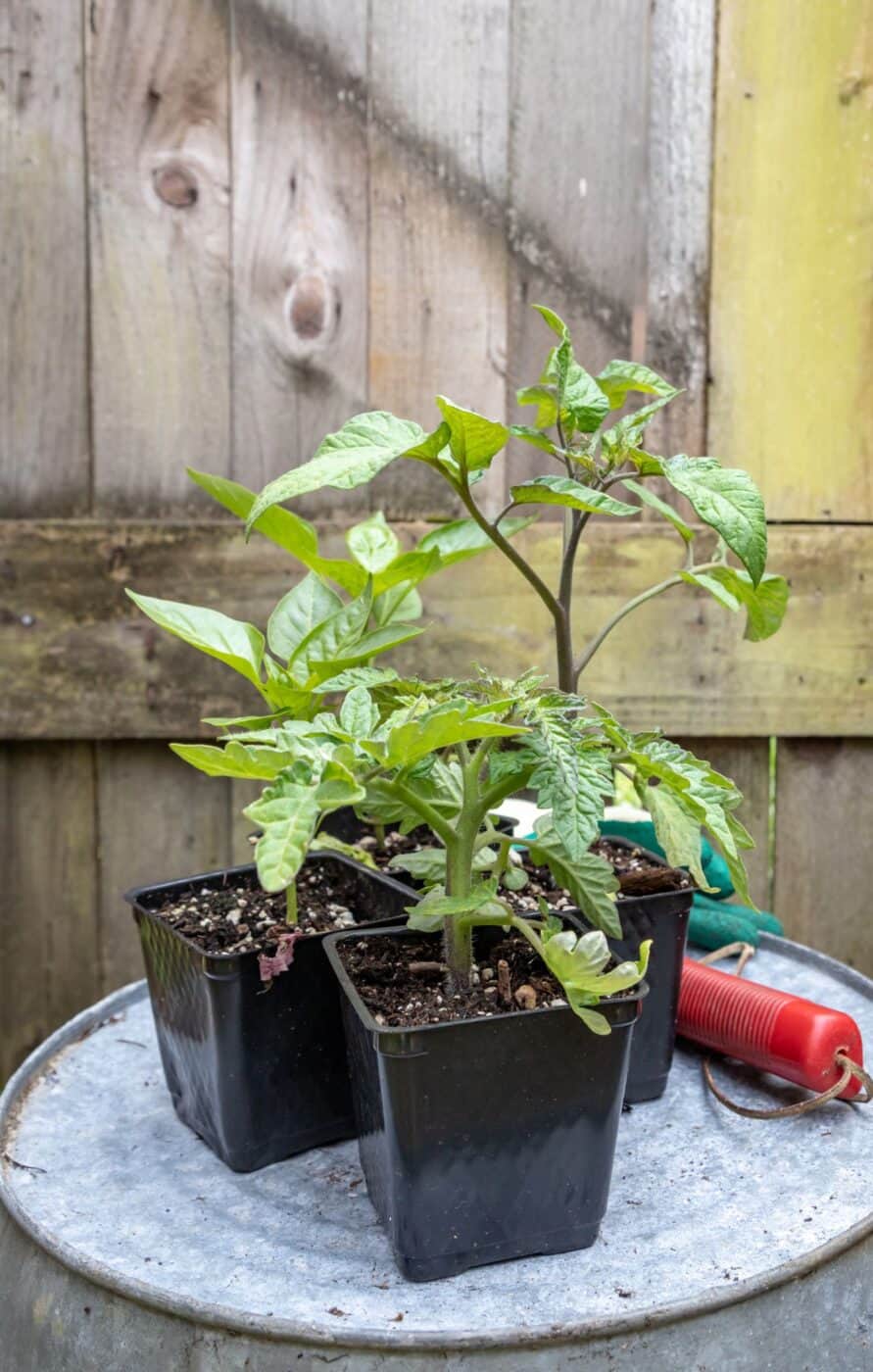
FAQs about outdoor seed starting
Can I start my seeds outside?
Yes, you can start your seeds outside. However, it is important to consider the climate and season before doing so. In most parts of North America, starting seeds outdoors in spring or early summer is best for optimal growth and success, unless you use the winter sowing method.
Make sure to check the temperature range of the plants you are growing as well as soil conditions such as moisture levels and pH balance. If necessary, use a soil thermometer to determine when it’s safe to plant your seeds outdoors. With careful planning and preparation, you can successfully grow your own garden from seed.
When should I start planting seeds outdoors?
The best time to start planting seeds outdoors depends on your location and the type of plants you are growing. Generally, most vegetables (like lettuce, carrots, and peas) can be planted as soon as the soil is workable in spring (usually around late March or early April). However, some crops such as tomatoes and peppers should wait until mid-May (in cold climate) when temperatures have warmed up. Additionally, if you live in a cooler climate with shorter summers, consider starting your seeds indoors before transplanting them outside later. With proper planning and timing, you can ensure that your garden will thrive.


